NOTE: This article was first published on 7 April, and has since been updated
As a result of the current pandemic, many countries have been put on lockdown because of the coronavirus. With over 3.66 million cases reported and more than 257,000 deaths. in more than 230 territories, the virus has truly spread across the globe. These include everything from quarantines to entry bans for visitors and even completely closed borders. The restrictions have had a serious impact on the travel industry and economy, both of the countries involved and globally. So, which countries are under lockdown due to the coronavirus outbreak, and who’s next?
Countries around the world are intensifying their efforts to try to stop the spread of the coronavirus, with citizens being placed under various forms of lockdown. The World Health Organization (WHO) recognised the outbreak as a pandemic on 11 March 2020, and has called on “all countries to continue efforts that have been effective in limiting the number of cases and slowing the spread of the virus.” As of 13 May, more than a third of the planet’s population is under some form of restrictions.
Also Read: A Coronavirus Travel Advisory And Guide
So, Which Countries Are Under Coronavirus Lockdown, And Who’s Next?
NOTE: All numbers and figures are correct as of 13 May 2020
China Has Locked Down Numerous Cities For Six Weeks
The virus that causes COVID-19 first appeared in Wuhan, China in late December 2019. The city has been on lockdown because of the coronavirus since 23 January 2020, and was swiftly followed by 15 other cities and eventually 20 provinces and regions in the largest quarantine in human history. By 18 March, China was reporting very few new local cases since the start of the outbreak (though some cases are still popping up) and began to lift the lockdown on Wuhan on April 8. So far, there have been 82,883 confirmed cases and 4,633 deaths due to the disease.
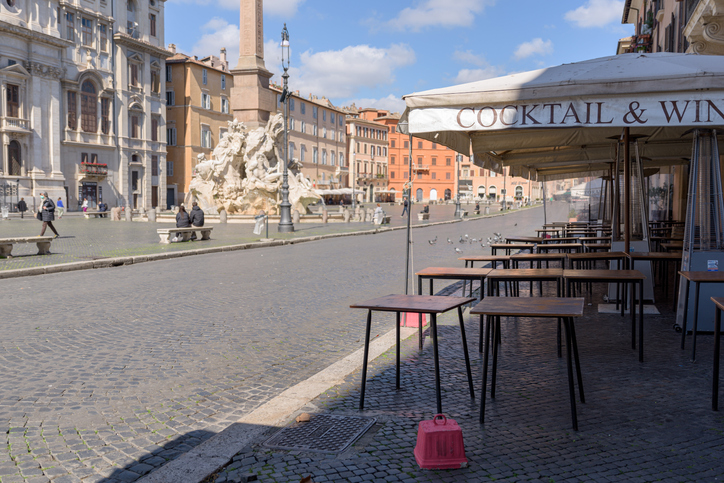
Italy Instituted A Nationwide Lockdown On 10 March
Italy saw the largest number of cases outside China, and on 10 March, the entire country of Italy was put under lockdown until 3 April by Prime Minister Giuseppe Conte. All non-essential services, such as restaurants, schools, museums, and most stores have been temporarily closed, with only grocery stores and pharmacies remaining open. While public transportation and airports are still operating, only essential travel is allowed with permission. So far, 213,013 people have been infected and 29,315 have died.
Spain Followed Suit And Imposed A Quarantine On 14 March
On 14 March, Spain became the second European country to impose a nationwide quarantine for an initial period of 15 days. 47 million residents were asked to stay in their homes, only being allowed outside to visit the bank, for medical appointments, and to buy essentials. Bars, restaurants, and hotels were all closed. On 25 March, this lockdown was extended until 12 April, with Prime Minister Pedro Sánchez ordering all non-essential workers to stay at home because of the coronavirus lockdown. The country has had more than 219,329 cases and over 25,613 deaths.
France’s Lockdown Was Implemented On 16 March
The first case was reported in France on 24 January 2020, and the country closed nonessential businesses on 12 March, including schools and universities. On 16 March President Emmanuel Macron announced a full lockdown, banning public gatherings and walks outside, with residents being told to take public transit only if absolutely necessary and to buy only essential groceries. On 27 March, in light of growing infection and death rates, Prime Minister Édouard Philippe said that the lockdown would be extended until 15 April. So far, there have been 132,967 cases and 25,531 deaths.
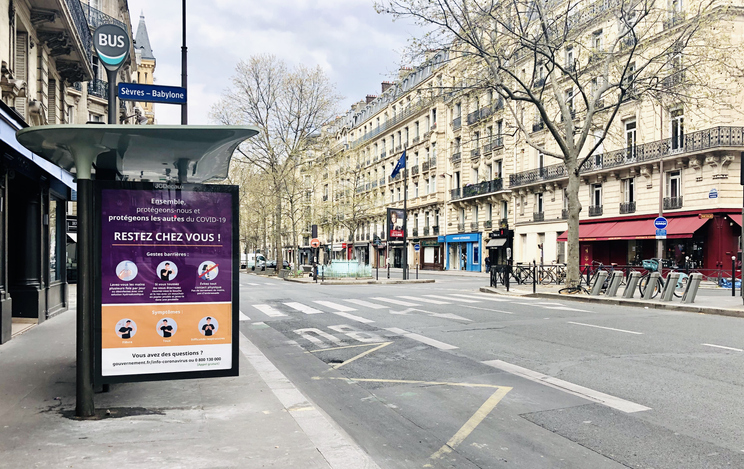
Malaysia Announced Closures On 16 March
Malaysia first reported cases of COVID-19 in January, but numbers remained relatively low until March. Following a sudden spike in cases, on 16 March the Malaysian government announced all business operations would be closed for two weeks, except essentials like markets, utilities, broadcasting, banking, and healthcare. On 25 March, Prime Minister Muhyiddin Yassin said in an address that the lockdown because of the coronavirus would be extended to 14 April. 6,383 people have been infected with the virus, while 106 have died.
Norway Closed Its Borders And Shut Down Most Services On 16 March
COVID-19 made its way to Norway by 26 February, with cases accelerating through March. The country was placed under a two-week lockdown on 12 March, with educational institutions, events, and most businesses were closed and citizens were asked to practise social distancing. On 16 March, Norway closed its borders to non-residents, and banned all but essential travel, with Prime Minister Erna Solberg deciding to extend the lockdown through Easter. There have been 7,955 cases reported, and 215 casualties.
Belgium Went On Lockdown On 17 March
The country reported its first COVID-19 case on 4 February, and on 17 March, Prime Minister Sophie Wilmes decided to impose measures to ensure that non-essential travel was prohibited, non-essential shops were closed, and gatherings banned. Penalties were also imposed to force companies and individuals to abide by the coronavirus lockdown until 5 April. On 20 March, Belgium closed its borders and extended these measures until 19 April. The country has reported 50,509 cases and 8,016 deaths.
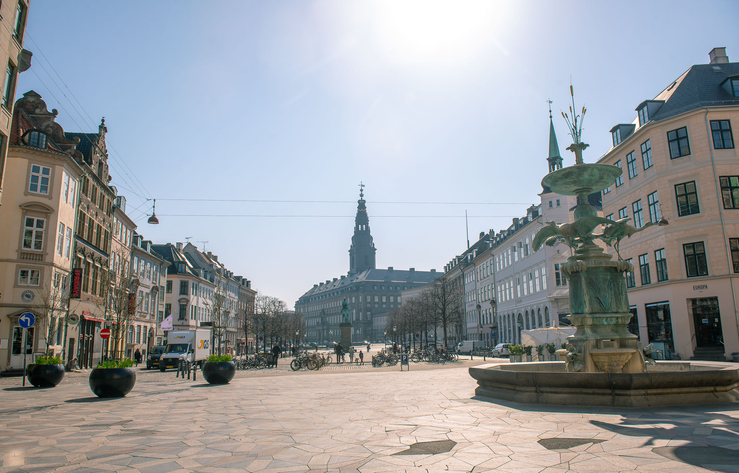
Denmark Enacted A Complete Lockdown On 18 March
Denmark asked people working in non-essential functions in the public sector to stay home for two weeks starting on 13 March, and between the 13 and 16 closed all schools and universities. By 18 March, a number of further restrictions were activated restricting the assembly of over 10 people and closed most other non-essential businesses. These measures are in place until 13 April. Denmark has seen 9,821 cases and 503 fatalities.
Israel Declared A State Of Emergency On 19 March
Israel’s first case was confirmed on 21 February, and the country initially limited gatherings to 100 (and then 10) people. However, on 19 March, Prime Minister Benjamin Netanyahu declared a national state of emergency, tightening regulations on these restrictions, and closing all but essential services including food stores, pharmacies, and banks. On 25 March, Israelis were forbidden from leaving their homes except for essentials, and for exercise, placing them on lockdown due to the coronavirus. The country has had 13,654 cases and 173 deaths so far.
Jordan Imposed A Rigid Curfew On 19 March
The pandemic reached Jordan in March 2020, and the government declared a state of emergency on 19 March. On 21 March, a rigid curfew was put into place, with residents not allowed to leave their homes at all. However, in the following days, these measures were eased and people were permitted to leave their homes for essential trips, i.e. for medicine and food. Jordan has reported 417 cases and 7 deaths.

Morocco Declared A State Of Emergency On 19 March
After the first two cases were confirmed on 2 March, schools were shut down, and all passenger flights and ferry crossings to and from Spain, Algeria and France were suspended on 13 March. Following this, a state of emergency and a lockdown because of the coronavirus was declared on 19 March. Citizens were asked not to leave their homes, except workers at supermarkets, pharmacies, banks, gas stations, medical clinics, telecommunications companies, and other essential jobs. The country has had 2,855 people infected with COVID-19 and 141 deaths.
Argentina Entered A Lockdown On 20 March
On 20 March, Argentina entered a nation-wide lockdown, with non-essential workers prevented from leaving their homes except to buy groceries or medicines, and police deployed to monitor the streets. While this was initially meant to last until 31 March, the lockdown was extended on 29 March by President Alberto Fernandez until mid-April. Argentina has reported 2,930 cases and 134 deaths.
The UK Went Into Full Coronavirus Lockdown On 23 March
COVID-19 spread to the United Kingdom in January 2020, leading to an epidemic with a rapid increase in cases. On 18 March, most schools were closed down, while on 20 March restaurants, pubs, clubs and indoor sport and leisure facilities followed suit. Prime Minister Boris Johnson announced a more strict approach, with restricted movement (limited to essential work, exercise, and purchasing food or medicine) because of the coronavirus lockdown. There have been 194,990 confirmed cases and 29,427 deaths.
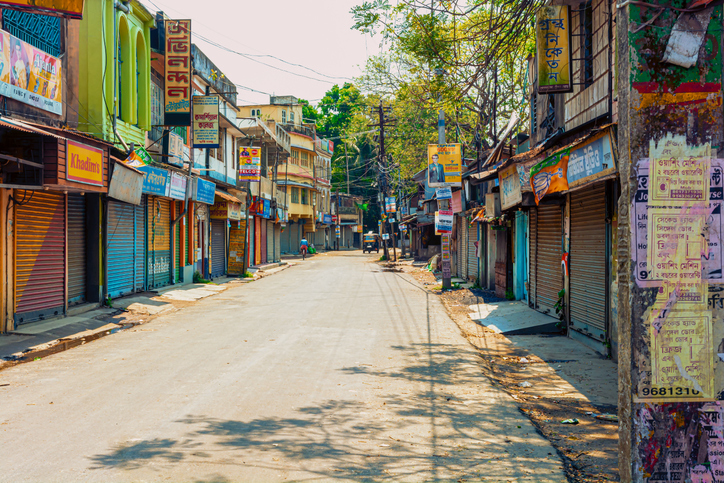
India’s Lockdown Has Been In Place Since 24 March
The first reported case of COVID-19, the illness caused by the new coronavirus, in India was on 30 January. After a self-imposed curfew of 14 hours on 22 March, Prime Minister Narendra Modi announced that the entire country was being placed under lockdown for 21 days (from 24 March onwards). The lockdown will be the largest yet, with 1.3 billion told to stay at home. All transport services – road, air and rail were suspended, with exceptions for transportation of essential goods, fire, police and emergency services. Other essentials like food shops, banks, ATMs and petrol pumps were also exempted. On 12 April, many states decided to continue these measures until 30 April, and then to 17 May. India has reported 49,391 cases and 1,694 fatalities.
Poland Shut Its Borders And Implemented A Lockdown On 25 March
Poland confirmed it’s first case of COVID-19 on 4 March, and by 13 March, implemented measures to close most businesses, schools and universities and prohibit international travel. These rules were strengthened on 25 March, limiting gatherings to two people forbidding all non-essential travel until the end of the coronavirus lockdown on 11 April. Poland has had 9,453 cases and 362 deaths.
New Zealand Enacted A Mandatory Quarantine On 25 March
New Zealand’s first case was reported on 28 February. On 23 March, the country closed public venues and mass gatherings, declaring a “Level 3” emergency. By 25 March, Prime Minister Jacinda Ardern announced that everyone was instructed to stay home and that only essential services were allowed to remain open, implementing a four-week lockdown after the number of cases in the country rose by almost 50 per cent. So far, there have been 1,488 cases and 21 reported deaths. Some lockdown restrictions were partially lifted on 27 April.
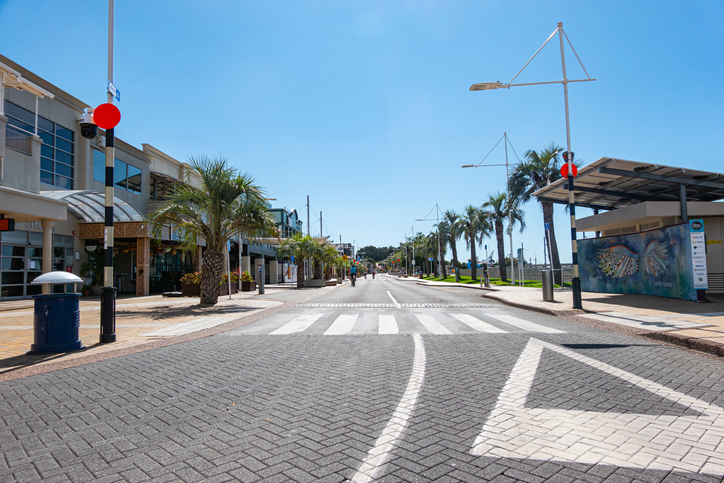
South Africa Went Into A 21-day Coronavirus Lockdown From 26 March
After announcing the first case on 5 March, President Cyril Ramaphosa of South Africa declared a national state of disaster on 15 March. A partial travel ban discouraging public transport and all non-essential travel was put into place, schools were closed, and gatherings of more than 100 people were prohibited. On 23 March, a national lockdown was issued, lasting 21 days from 26 March to 16 April 2020, with only essential businesses remaining open, and soldiers and police monitoring the streets during the coronavirus lockdown. The country has reported 3,158 cases and 54 casualties.
Ireland Declared A Two-week Lockdown On 27 March
On 29 February, the first confirmed case of COVID-19 was reported in Ireland. And on 6 March, Taoiseach Leo Varadkar announced the closure of all schools, colleges, and other public facilities (including the St Patrick’s Day parade on the 17) until 29 March, and this date was later extended until at least 19 April. On 27 March, the country closed non-essential shops and went into a two-week nationwide lockdown, with only essential movement permitted. Ireland has reported 15,251 cases and 610 fatalities.
Saudi Arabia Was Placed Under Curfew On 29 March
Saudi Arabia confirmed its first case on 2 March. On 8 March, the country closed all schools and universities and placed major hubs such as Ridayh, Jeddah and the Islamic holy cities Mecca and Medina under lockdown between the 25 and 29 of March. The entire country is placed on lockdown due to the coronavirus, with mosques and restaurants also remaining closed for the foreseeable future. The country has seen 9,362 cases in total and 97 deaths.
Singapore Went Into Lockdown On 3 April
Singapore initially announced that all travellers entering the country will be issued a 14-day Stay-Home Notice, as well as a ban on all short-term visitors, transit passengers, and all non-essential healthcare visitors. In addition, Singaporeans were advised to stay at home and avoid stores with the exception of buying essentials, and to defer all travel abroad. However, on 3 April the country announced a one-month lockdown as confirmed cases of local transmission were on the rise. Schools and most workplaces, except for essential services, will remain closed for a month from April 7. Singapore has had 8,014 cases and 11 fatalities.
Other Countries Have Announced Partial Shut-downs, Including:

Germany
Germany initially reported one of the highest numbers of coronavirus infections in Europe, leading Chancellor Angela Merkel to announce a shutdown of shops, churches, bars and clubs in 16 states. On 20 March the state of Bavaria was placed under lockdown, (soon followed by Hesse and Lower Saxony).
Australia
Australia’s first reported case was on 25 January, and so far there have been 4,250 confirmed infections. The country has not been placed under coronavirus lockdown, though Prime Minister Scott Morrison closed non-essential businesses and gatherings, and suspended many domestic flights on 23 March. Schools remain open, though social distancing measures have been put in place.
The USA
Since the virus first appeared in the US in January, the country urged residents to implement social distancing measures through April 30. On 20 March foreign nationals who had been in 28 European countries within the past 14 days were barred from entering. On 27 March, the US overtook both China and Italy in numbers of confirmed cases, however, the country has not been placed under strict lockdown. The action being taken has differed from state to state, with some states issuing “shelter-in-place” orders or aggressive social distancing policies. So far, four states have been placed under lockdown – Florida, Georgia, Mississippi, and Nevada. The US has reported 1,234,351 cases and 72,023 deaths, the highest of any country.
Russia
After the first case was confirmed in Russia on 31 January, various measures have been put into place by President Vladimir Putin, including cancelling events, closing schools, theatres and museums, shutting the border, and declaring a non-working week (where people have a paid “stay at home” week). Coronavirus lockdowns have so far only been imposed in Moscow, Saint Petersburg and 16 other regions. 155,370 cases and 1,451 deaths have been reported.
Czech Republic
The first three confirmed cases in the Czech Republic were on 1 March. After declaring a state of emergency, the country closed most shops and restaurants, closed its borders, and forbade the entry of foreigners, starting March 16. Schools are closed and public events cancelled, but citizens are allowed to go to work. However, a nationwide curfew has been declared until 1 April. The country has reported 2,878 cases and 17 deaths.
Kenya
The pandemic reached Kenya in March 2020, leading the government to close schools, pubs and restaurants, and block non-residents from entering the country on 15 March. Kenyans are being asked to maintain social distancing, aided by a nationwide curfew, which went into effect on 27 March. On 22 March, all international flights were suspended, and most public spaces were closed or restricted to no more than 15 persons, as the country edges towards a coronavirus lockdown.
Japan
Japan tightened its borders and postponed the Summer Olympics to 2021. While the government has tightened its border controls and restricted entry of foreigners, the country doesn’t currently have any laws that allow the government to restrict the movement of people in order to contain the virus. However, Prime Minister Abe declared a state of emergency, which was expanded to the entire country on 16 April. This resulted in the closure of some businesses, and the restriction of social interaction. Compliance to stricter social distancing is been based on cooperation.
Some Countries Have Closed Borders To Prevent The Spreading Of The Virus:
- Canada has shut its borders to anyone who isn’t a citizen, a permanent resident, or a US citizen; while the country is not on full lockdown, Nova Scotia has announced a state of emergency.
- Lithuania shut its borders on 23 March preventing nearly all foreigners from entering, and most Lithuanians from leaving the country, with the exception of business trips.
- Peru closed its borders on 29 March, after issuing a state of emergency that has been extended to April 12.
- Qatar stopped all incoming flights to the country and shut down shops in main commercial areas.
- Slovakia closed its borders to non-residents and banned public events.
- Ukraine closed its borders to foreign citizens for two weeks, after the first death from the virus within the country.
- North Korea has shut down airline flights and train service with neighbouring countries and established quarantines for recent travellers.
These Countries Have Not Imposed COVID-19 Quarantines:
- Unlike many other countries, Sweden has not applied any lockdown, with most measures being voluntary. The Public Health Agency and government-issued recommendations to work from home, if possible, avoid unnecessary travel, and banned gatherings of over 50 individuals.
- Though initially reporting large numbers of cases, South Korea implemented a policy of rigorous testing, screening the population for the virus, isolating any infected people and tracing and quarantining those who contacted them, allowing the country to limit the spread of the outbreak.
So What Does This Mean?
Lockdowns are just one of many measures being taken by countries to stop the coronavirus. Apart from this, one of the most important things to remember is to regularly wash your hands with soap and water and to avoid touching your face. Whether your country is under coronavirus lockdown or not, practice social distancing (minimise close contact between people, stay at home, limit travel, and avoid crowded areas).


